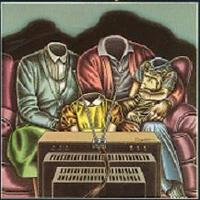
He reported live by CBS from England to America. His opening became famous. "This is London," he said in the bleak months of 1940 as wave after wave of luftwaffe bombers set fires with their incendiaries to the buildings below. Search lights lit gaggles of bombs falling through the sky as tracer bullets lit German motors and wings for RAF Spitfire pilots diving on the bombers.
The London Blitz began about four in the afternoon the 7th of September 1940, and as air raid sirens sounded, the first German bombers arrived to drop their bombs on London. Over 340 German bombers escorted by around 600 fighters dropped hundreds of incendiary bombs on the London docks. The raid lasted until 6:00 pm. A couple of hours later, the flames served as beacons for the second wave headed across the channel from France. This attack lasted until 4:30 in the morning. More than 430 people were killed, with 16,000 serious casualties. The Blitz rained death on Londoners for 57 nights in a row, sirens awakening them in the middle of the night, urging them to take shelter.
For Americans, Edward R. Murrow chronicled this horror, and he stood on London roof tops, describing the planes and bombs in the sky, the flames leaping up over London. In Ohio and Iowa, New York and California, families clustered around living room radios to hear him. He brought the war home and prepared Americans for their entry into it. He shaped public opinion and encouraged aid to Britain.
He began a sign-off that became a recent movie title. As the war from the skies raged, Londoners did not know if they would see one another in the morning. They said “So long and good luck.” Ending a live radio broadcast, Princess Elizabeth said to the Free World, “Good night and good luck to you all.” At the end of a 1940 broadcast, Murrow signed-off with Good night and good luck.” George Clooney’s movie adopted the phrase as its title, David Strathairn playing Edward R. Murrow.
In 1941, back in the USA after three years abroad, he was guest of honor at a dinner hosted by CBS at the Waldorf-Astoria, eleven hundred guests in attendance, millions more listening on the radio. Franklin Delano Roosevelt sent him a telegram. Archibald MacLeish, Librarian of Congress, gave a speech in praise of him.

Murrow climbed down from the roof tops of London and into the bellies of RAF and American bombers, flying with crews over Germany. In one night bombing raid, on December 2, 1943, he flew in an Avro Lancaster with D for Dog, as its nose art. In his radio report, even today we feel his and the crew’s fear, see the German search light cones probing the sky, feel the bomber twisting and turning out of reach. You can listen his radio to report here.
In his post war years, he became well-known for his character, integrity, and stance against ill-used power or influence. In a legendary 1954 broadcast he helped end the Red Scare and Red-baiting of Senator Joseph McCarthy. Once close friends with CBS boss William Paley, he fell out with the man, and took issue over Paley’s desire to improve profits at the expense of journalistic integrity. Paley’s successors, of course, have had their way with the media, so that today the public is entertained but rarely informed.
Contrasting what London was like then (audio), to what it is today (video), this link very poignantly provides a Murrow broadcast during the Blitz, and reminds us that all those 21st Century visitors don’t have a clue as to what 1940 Londoners had to endure.













